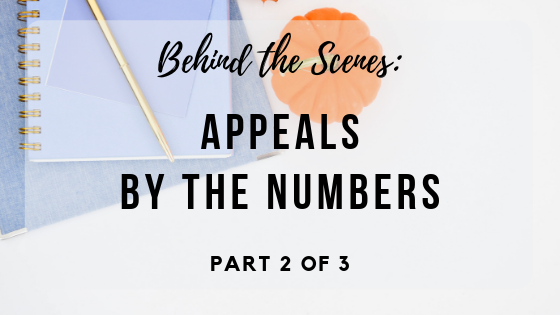This is part two in a three-part series on Appeals. We will look at fundraising appeals by the numbers to determine how much we need to ask for in our appeal and strategy to use.
I hate math. Really. Hate. Math. But to do an appeal right, even those of us who hate math but love the creative has to pay attention to the numbers. So, here we go.
Goals
These are usually dictated by the organizational goals. The organization’s budget will say something like, “Hey, fundraising! We are expecting to see you bring in $2,000.” (My colleagues with million dollar budgets are wishing they had that number right now. Be glad you’re small).
The person in charge of fundraising (you?) takes that number and says, “Okay, what ways am I going to use to raise this money?”
The $2,000 goal is divided up between all the fundraising activities and Appeals get a goal. Let’s say, in this example, that we had two events that brought in $500 each for $1,000 total to raise. We decide to go for the $1,000 on the year-end appeal.
The Process to Find Our Range
We want to find out our response rate range for suggested donations and what our ask may be in the appeal. So we gather what we know. Our goal is $1,000. Our expenses for this appeal will be $100.00. We have a mailing list of 200 and we want to buy a list of 1,000 to expand our donor database. We also collected 100 names total at our two events. Since this is the first time we are sending our event participants something, we will put them in the new donor pile. The typical response rate for existing donors is about 5%. (If they really love you it can be as high as 25%). New acquisitions have a 1% response rate. (They haven’t learned to love you, yet). So our range looks like this:
| Donor Type | Number of Donors | Response % | Our Expected Number of Responses |
|---|---|---|---|
| New Donor | 1,100 | 1 | 11 |
| Existing Donor | 200 | 5 | 10 |
Our range for our response rate is between 10 and 11 people we expect to give at a minimum. While we will have a combination of both, we will look at each individually.
If our 11 new donors made our goal plus paid our expenses ($1,100), they would have to donate an average of $100 each. A new donor may have a $25 average gift so we can’t depend on our new donors.
If our 10 existing donors made our goal plus paid our expenses ($1,100), they would have to donate an average of $110 each. Not outlandish for an existing donor who knows your organization.
Strategy
So once we see the range, we know two things: 1) if we can make the goal on numbers alone; 2) if our appeal will have to be produced to boost response rate to make the goal.
If, in the example, we received a 25% response rate from existing donors last year and everything else is the same, then the numbers go like this:
| Donor Type | Number of Donors | Response % | Our Expected Number of Responses |
Average Gift Needed to Make Goal plus Expenses |
|---|---|---|---|---|
| New Donor | 1,100 | 1 | 11 | $100 |
| Existing Donor | 200 | 5 | 50 | $22 |
This is an example of the numbers alone being able to make goal plus expenses. An existing donor will make a minimum donation of $25 most of the time. (But often gives more than the minimum.) Your new donor will give at the low end because they are testing the waters.
What if you need to increase the response rate of this appeal?
Two strategies I use are: 1) include a freemium or 2) write your appeal to gain more responses.
Freemium– a free something included in the mailing. You’ve seen these most often as personalized address labels. Freemiums increase the response rate but be careful. The average donation amount will go down.
Write your appeal to gain more responses. Let people know your goal and ask if they can be one of x number to give $x. In the first example, the numbers would look like this: If we have 21 donors, each donor will need to average $52 (rounded). So we say, “We need just 21 people to give $52 so boys and girls like little Suzie (the child you’ve told the story of) can get the medical attention they need. Will you be the one?” You can also take the 1% gift amount if it isn’t too high and use the previous technique. Using the New Donor expected responses, you would ask 11 people to donate $100 each. If I’m a donor, that sounds like something I can do. Also, include a sentence about any amount being appreciated and helping you get to your goal.
Suggested Donations
What are the suggested donation amounts we need to ask on the reply card? Take a look at your numbers and your donors. If you have income levels and a giving history, that is the best place to start. I know small organizations may not know the numbers or have fancy databases to get you those numbers so we will do the next best thing. Take a look at your average gifts needed. You will make sure these numbers (rounded up to the nearest $5 or $10) are in the list to pick from. In the second example, we need a minimum of $22, a maximum of $100, and an average of $52. So I know I’m going to suggest $25 and $100. The $52 is tricky and a judgment call. $50 is a typical amount to suggest. $55 is less typical. On one hand, people are so used to seeing $50 they wouldn’t bat an eye. But the $55 is off and would get my attention. And $52 is all we need 21 people to give. This is where you decide: Am I a risk taker?
You can then decide if you want a $75 suggestion or a $150 one. I would look at your existing donors and see what their giving history looks like. Do they go low or go high when giving? Then pick one.
Whew! We covered a lot of math!! Did I mention I hate math? But it had to be done.
Next week I finish up the series and take a look at the anatomy of an appeal letter.
If you have any questions (or my math is off), please let me know.


 Most nonprofit leaders lay awake at night trying to figure out how to fund their mission.
Hi! I'm Alesha.
I teach sustainable fundraising in a way that they can take action today so they can serve their clients.
I can help you move from just getting started funding your new nonprofit to gaining confidence in your fundraising and building relationships to knowing what works for your organization and looking at the infinite game when it comes to funding. I’ve worked with nonprofit Founders and written the book I HAVE MY 501(C)3! NOW WHAT?!? Your Blueprint to Starting Your Nonprofit Without Being the Sole Funder that lays the foundations for funding in a new nonprofit.
I’ve worked in Development (Fundraising) Departments in large organizations and I know the no cost, low-cost methods they use to bring in funding. I bring those sound strategies to the nonprofits I serve.
Most nonprofit leaders lay awake at night trying to figure out how to fund their mission.
Hi! I'm Alesha.
I teach sustainable fundraising in a way that they can take action today so they can serve their clients.
I can help you move from just getting started funding your new nonprofit to gaining confidence in your fundraising and building relationships to knowing what works for your organization and looking at the infinite game when it comes to funding. I’ve worked with nonprofit Founders and written the book I HAVE MY 501(C)3! NOW WHAT?!? Your Blueprint to Starting Your Nonprofit Without Being the Sole Funder that lays the foundations for funding in a new nonprofit.
I’ve worked in Development (Fundraising) Departments in large organizations and I know the no cost, low-cost methods they use to bring in funding. I bring those sound strategies to the nonprofits I serve.